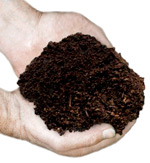Sustainable Gardening Benefits
Diverse Edible Gardens
Help provide proper nourishment and five-a-day fruits and vegetables.
Supplement food budgets.
Provide fresh food that has not been grown with pesticides and chemical fertilizers.
Provide a healthy family activity.
Provide an education in ecology, botany, and the cycle of life for the whole family.
Provide a fun activity that includes good exercise.
Provide a needed stress reducer in a fast-paced world.
Bacteria in the soil generates Serotonin in our brains which makes us feel good/happy.
Provide for the development of positive relationships with neighbors through communication as well as the sharing of produce.
Provide beauty and a place to practice being good stewards of the earth on your little piece of land.
Help lessen the impact of waste products in city dumps through composting of left-over food.
Help lessen green waste by composting and mulching.
Help lessen chemical run-off into our streams and rivers by using environmentally friendly garden practices.
Help lessen air pollution created from conventional lawn yard-care equipment.
Provide diverse species of plants that provide habitat for beneficial insects and wildlife.
Reap the Benefits of Fresh Produce
Veggies and fruits are rich in flavonoids and carotenoids with both antioxidant & anti-inflammatory activity. Both promote healthy digestion, can fill you up with few calories and little to no fat, and are among the healthiest snack options when on-the-go.
Dark leafy greens and cruciferous vegetables are especially good choices, as are berries and other low-glycemic fruits. Aim for 4-5 servings of vegetables and 3-4 servings of fruit per day - go for a wide range of colors, choose fruit and vegetables that are fresh, in season, and buy organic whenever possible, or best yet, grow your own!
Gardening in Sacramento
Sacramento City was built on healthy river soil and our climate is temperate, allowing for wonderful four season gardens. We also have few pests and diseases, unlike most areas of the United States.
Our climatic gardening Zone is 9 or 9b and Sunset Magazine Zone 14, which dictates the wide variety of plants that thrive in our city.
"2012" USDA Plant Hardiness Zone Maps:
http://planthardiness.ars.usda.gov/PHZMWeb/
NOTE: The 2012 USDA Plant Hardiness Zone Map is the standard by which gardeners and growers can determine which plants are most likely to thrive at a location.
The map is based on the average annual minimum winter temperature, divided into 10-degree F zones.
Two new zones have been added to this edition of the USDA PHZM. Zones 12 and 13 have been introduced for regions with average annual extreme minimum temperatures above 50 degrees and 60 degrees F, respectively. They only appear on the maps for Hawaii and Puerto Rico.
For the first time, the map is available as an interactive GIS-based map, for which a broadband Internet connection is recommended, and as static images for those with slower Internet access.
Users may also simply type in a ZIP Code and find the hardiness zone for that area.
SPECIAL NOTE: When researching information about gardening, many documents are based on different gardening zones than ours, so this needs to be taken into account when reading about plant type recommendations and care directions.
